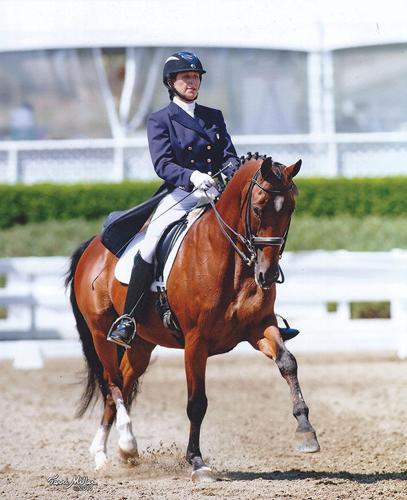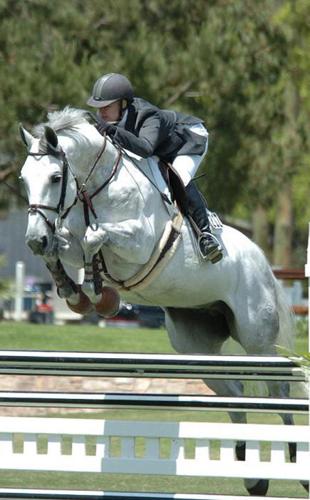From world-class equestrian facilities to backyard barns, nothing is more pleasurable for horse-crazy riders than feeling the hot breath of a horse on their face, tacking up and riding. And despite the vast array of roles horses play, these animals impact those who interact with them in amazingly similar ways.
To start, riding provides an abundance of health benefits for riders. Simply getting on a horse involves flexing and stretching little-used muscles. Once aboard, every single muscle is toned and strengthened as the body counter-reacts to the horse’s movements, avoiding getting off balance while guiding and controlling the horse.
To reap these benefits, you certainly don’t have to be a world-class equestrian. Even leisurely trail rides at a slow walking pace work to develop more rapid reaction times, spatial awareness, and better hand-eye coordination. And at faster paces like the trot and canter, riding becomes an excellent aerobic exercise, oxygenating the blood, improving circulation, speeding up the metabolism, and extending breathing and breath-control. In fact, it can even be better than jogging at burning off calories!
But the healthy benefits extend far beyond the physical. These animals become riders’ friends and companions, and they teach powerful lessons that resonate throughout all aspects of life. Earning the respect and trust of a horse tests your patience, confidence, determination and courage. Yet it instills enormous self-esteem and self-discipline.
There is strong evidence that time spent petting, grooming and riding horses is beneficial to people with a variety of special needs. That’s why many long-established and respected organizations in San Diego, such as the Helen Woodward Animal Center in Rancho Santa Fe, offer equine therapeutic programs to help individuals develop better communication, compassion and self-confidence.
As if all these benefits were not enough, horses have the ability to touch your soul! There is something very humbling about standing besides a 1,000-pound animal. Despite its huge advantage in size and strength, a horse trustingly lets riders climb onto its back, while responding the rider’s cues. Hyper focusing on something that necessitates all of one’s physical and mental concentration allows a person to put their troubles into perspective. Countless riders report feelings of purpose, calm and joy when being with their horse—similar to the Zen one achieves from practicing yoga. In a sense, riders can leave their troubles on the ground, as horseback riding takes them to places that transcend ordinary existence.
Feeling motivated to get healthy and get riding? In an area known for its upscale ranches, and with more than 125 horse-boarding facilities, it’s easy in San Diego to find a barn to get involved. It is a city where riding and equestrian events are as popular as baseball and football. No matter what the style—dressage, saddle seat, hunter/jumping or just riding for pleasure—there is really something for everyone in this equestrian paradise.
Often referred to as horse ballet, dressage is one of the hottest trends in the local equestrian scene. It’s grounded in the development of communication between rider and horse, and defined by the precision and fluidity of its elegant form and difficult maneuvers. A sport where horses and riders have to be in perfect harmony, dressage involves a melding of personality and temperament that can take years of training as the horse learns the delicate cues from its rider.

Dress horse riding FINE magazine
Many have viewed this refined sport on television—perhaps at the Olympics or the World Games—with riders dressed in top hats, horses groomed to a sheen, and crowds that respond with cultured applauses and mummers of approval. But not all San Diegans are aware that tucked away in Carmel Valley is an internationally recognized dressage-training stable that turns out world-class dressage riders and horses. The 22-acre equestrian center, known as Arroyo Del Mar, is led by four-time Olympian Steffen Peters—who ranked first while riding the horse Ravel on the U.S. dressage team at this year’s Olympics—along with his wife Shannon, a dressage champion herself, and five other trainers.
Among Peters’ current students are internationally ranked Emma Weinert from Australia, Lientje Schueller from Germany and Brandi Roenick from Arizona. The ranch also offers training, lessons and horse clinics, to which people with an interest can come and learn from these experts about all things pertaining to dressage and training methods.
Saddle seat is also a popular style of riding in San Diego. While this riding discipline incorporates the same principles of control and balance found in dressage, the ultimate goal in saddle seat is to deliver a truly thrilling and animated performance. These horses are flashier in style with high head carriages, long arched necks and lots of "knee action"—lifting their feet high and gracefully off the ground with each step.
Whistling and boisterously cheering spectators watching a truly great saddle seat performance might think the horse is about to burst with excitement, but the well-trained saddle-seat horse is very responsive and comfortable to ride—much like a finely tuned sports car. Breeds such as American Saddlebreds, Tennessee Walking Horses, Morgans and Arabians are typical for this manner of showing.
Riders interested in saddle seat can learn in San Marcos at one of the top Arabian and Half-Arabian saddle seat farms in the industry—Stachowski Farms West. Head by National Champion trainer Jonathan Ramsay, this barn draws top clientele from all over the United States, and is known for its tremendous success at both regional and national levels. Or one can head down the road to Liz Bolton Stables. Also located in San Marcos, Bolton Stables offers top-notch riding lessons and instruction on Saddlebred horses for serious show ring competitors, as well as recreational riders.
For a more eclectic variety of riding disciplines, The Rancho Riding Club on Rambla De Las Flores has long been a mainstay in the Ranch for both beginners and experienced riders. There are five versatile trainers in residence, each with their own style and discipline. This includes saddle-seat trainer Nicole Johnson, as well as Tina Caldwell, the former assistant to three-time Olympian Guenter Seidel. But the club is recognized more for training hunters and jumpers. RRC trainers Wanda Weldy—who also heads a competitive show team—and Tanya Levorchick specialize and offer lessons in these disciplines.

Jumper horse riding FINE magazine
Bred to carry riders while hunting foxes, these horses should have loads of endurance to cover great distances while following their hunt—moving with long, low, ground-covering strides. In the arena, they are still judged on these criteria, but rather than actually hunting the fox, they are typically used for showing in hunter or jumper classes, or for cross-country riding, when riders jump natural obstacles like logs, ditches and streams through fields or forests.

Jumper horse riidng FINE magazine
Those who are unfamiliar with horse shows might be confused about the difference between hunter and jumper classes. Hunters are judged subjectivity on the level to which they meet an ideal standard of behavior, style and way of going. Conversely, jumper classes are scored objectively, based completely on a numerical score determined solely by whether the horses attempts the jump, clears it and finishes the course in the allotted time.
Yet outside of this large show horse community, there are still many horses purely ridden for pleasure along the trails and beaches. For instance, residents in Rancho Santa Fe have convenient access to 40 miles of the well-maintained trails in the Covenant. But there are dozens of other local boarding stables in San Diego that also offer access to trails, as well as stables that rent horses for self-guided or guided trail rides.
So whether it’s the smell of leather, horses and fresh shavings, or the sound of greeting nickers when walking into the barn, or the camaraderie of people who have also caught the horse bug, or the fact that time at the barn is some of the most rewarding time spent during one’s day—it all starts with the love of the horse. And it’s a love that has more benefits than one can even begin to realize without experiencing it for themselves.







(0) comments
We welcome your comments
Log In
Post a comment as Guest
Keep it Clean. Please avoid obscene, vulgar, lewd, racist or sexually-oriented language.
PLEASE TURN OFF YOUR CAPS LOCK.
Don't Threaten. Threats of harming another person will not be tolerated.
Be Truthful. Don't knowingly lie about anyone or anything.
Be Nice. No racism, sexism or any sort of -ism that is degrading to another person.
Be Proactive. Use the 'Report' link on each comment to let us know of abusive posts.
Share with Us. We'd love to hear eyewitness accounts, the history behind an article.